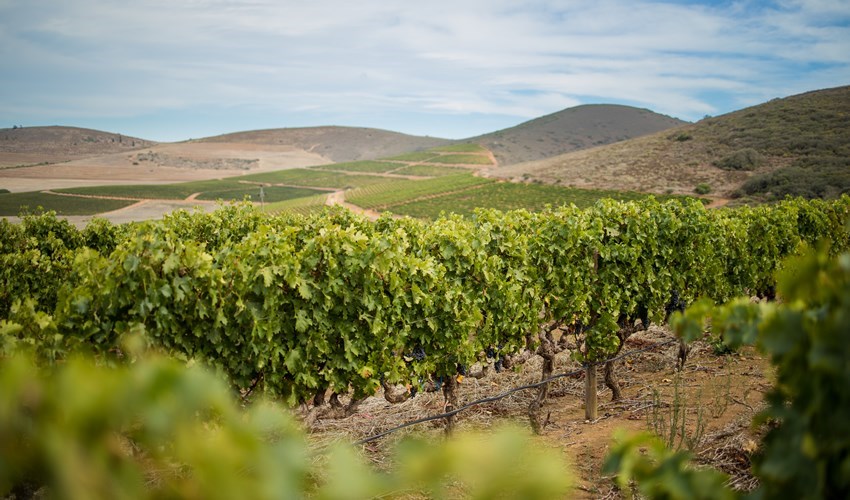
The 2023 harvest, however, did not meet expectations. Despite the anticipation, the vineyard only received 300 mm of rain during 2022, compared to the long-term average of 470 mm per annum.
While Groote Post's vineyards can be classified as dryland, about two-thirds of the hectarage has access to supplementary irrigation, providing the equivalent of around 30 mm of rain. The spring and early summer growing season were free of any fungal outbreaks, and the amount of bunches per vine appeared very promising.
Although the annual rainfall was low, the 50mm of rain in December raised hopes that the shortage of seasonal rain would be alleviated to some extent.
The vintage started ten days earlier than 2022, beginning with Pinot Noir for Cap Classique on January 19th and ending with Merlot on March 16th.
Unfortunately, what had initially looked like a promising crop turned out to be 23% less in tonnage, with grape bunches lighter in weight and without the traditional side bunch (shoulder bunch) attached to the main bunch. White grape varieties were the hardest hit, down between 20% and 50% on the 2022 crop, and red varieties down less than white at 10% to 20%.
Despite the lower crop, the timing of the rain towards the end of the harvest proved significant. Lukas, winemaker noted that the vineyards needed water at that stage, which was not only beneficial post-harvesting but also for the late Merlots. The rain brought relief and will positively impact next year's crop.
Lukas was amazed by how the vines continue to adapt to changing and tough weather conditions, highlighting the perfect terroir for growing wine grapes and a wide range of varietals. As Lukas says, "you are only as good as your next vintage."